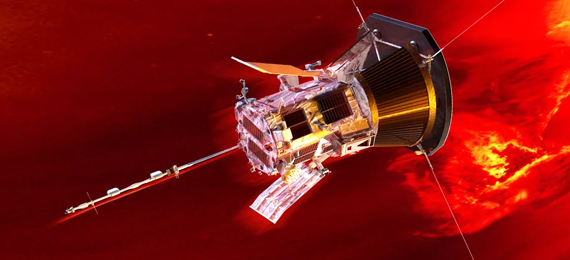
It is periodic to witness a spacecraft that has touched the Sun. NASA’s Parker Solar Probe has reached into the Sun’s top atmosphere which is also known as the corona. It successfully collected particles and magnetic field samples. On Tuesday 14th Dec 2021, researchers apprised the conference of the American Geophysical Union. Uncover everything about the Parker Solar Probe and how it reached close to the Sun.
Traveling to the Sun: Does the Probe Melt?
The Parker Solar Probe was developed by NASA, To examine the Sun that has officially reached close to the corona (outermost part), making it a remarkable accomplishment in the solar science department. It launched in 2018, the spacecraft was constructed to solve the mystery of the Sun. As stated by NASA, it is getting closer to the sun. The agency announced during an official release on Wednesday, December 15, the probe successfully “touched the Sun” and it went around 13 million kilometers to the Sun. Wondering what made it reach the solar system’s star?
Now, scientists are able to discover more about the Sun and the Solar system with the help of the Sun’s core. Coming Summer, NASA’s Parker Solar Probe will launch to space to travel as close as possible to the sun and more in-depth into the solar environment than any space mission ever took place. If Earth was located at one end of the yard-stick while the sun was on the other side, Parker Solar can travel within four inches of the solar outer area. The spacecraft can offer better observations of part of the solar atmosphere, a region known as the corona, and also about a wide range of particles, heat, and energy. The spacecraft can travel at a temperature that is higher than a million degrees Fahrenheit which is bombarded with harsh sunlight.
Why Won't the Parker Solar Probe Melt in the Corona of the Sun?
- A. Has heat shield
- B. More Powerful than Sun
- C. Both
- D. None of the Above
Why Didn’t the Parker Solar Probe Melt?
The corona which Probe crosses through has an extremely high temperature and a low density. Parker Solar Probe is designed in such a way as to withstand the extreme temperature fluctuations and conditions for the space mission. It has a heat shield and an autonomous system that can protect it from the Sun’s harsh light emission. However, it also allows the coronal material to touch the spacecraft. It has a 4.5-inch thick carbon-composite heat shield that can resist temperatures up to 1,377 degrees celsius. According to NASA, the closest visit was made in January 2022, when the probe went close to 6 million kilometers from the solar outer area.